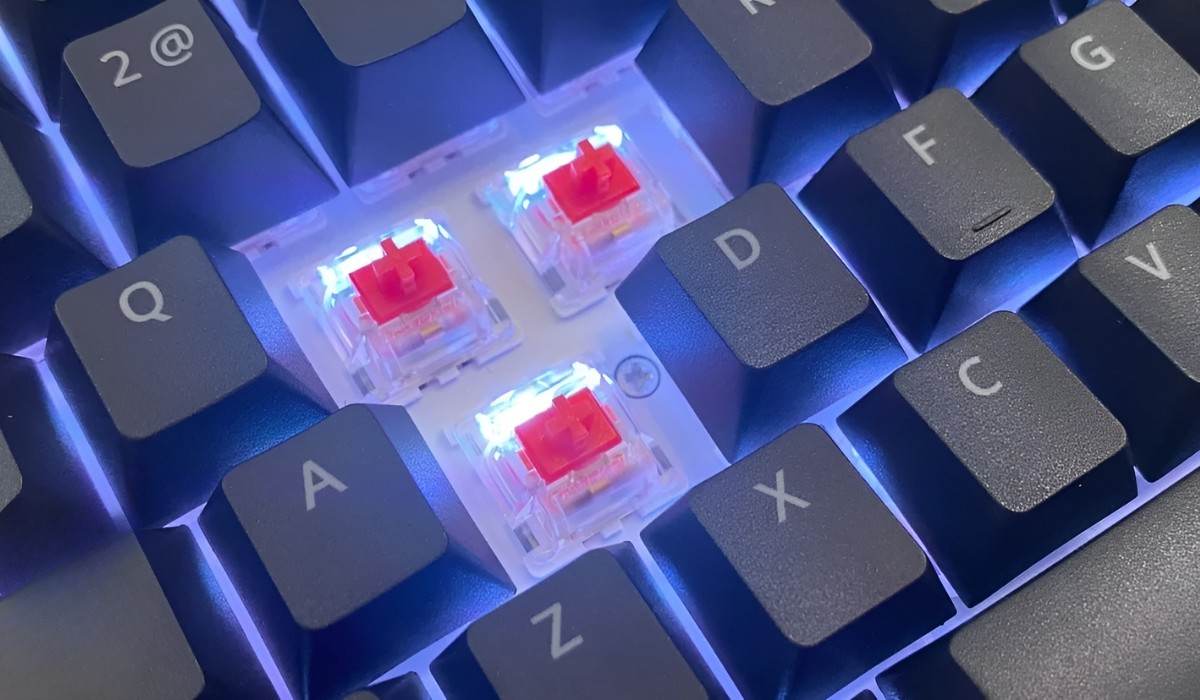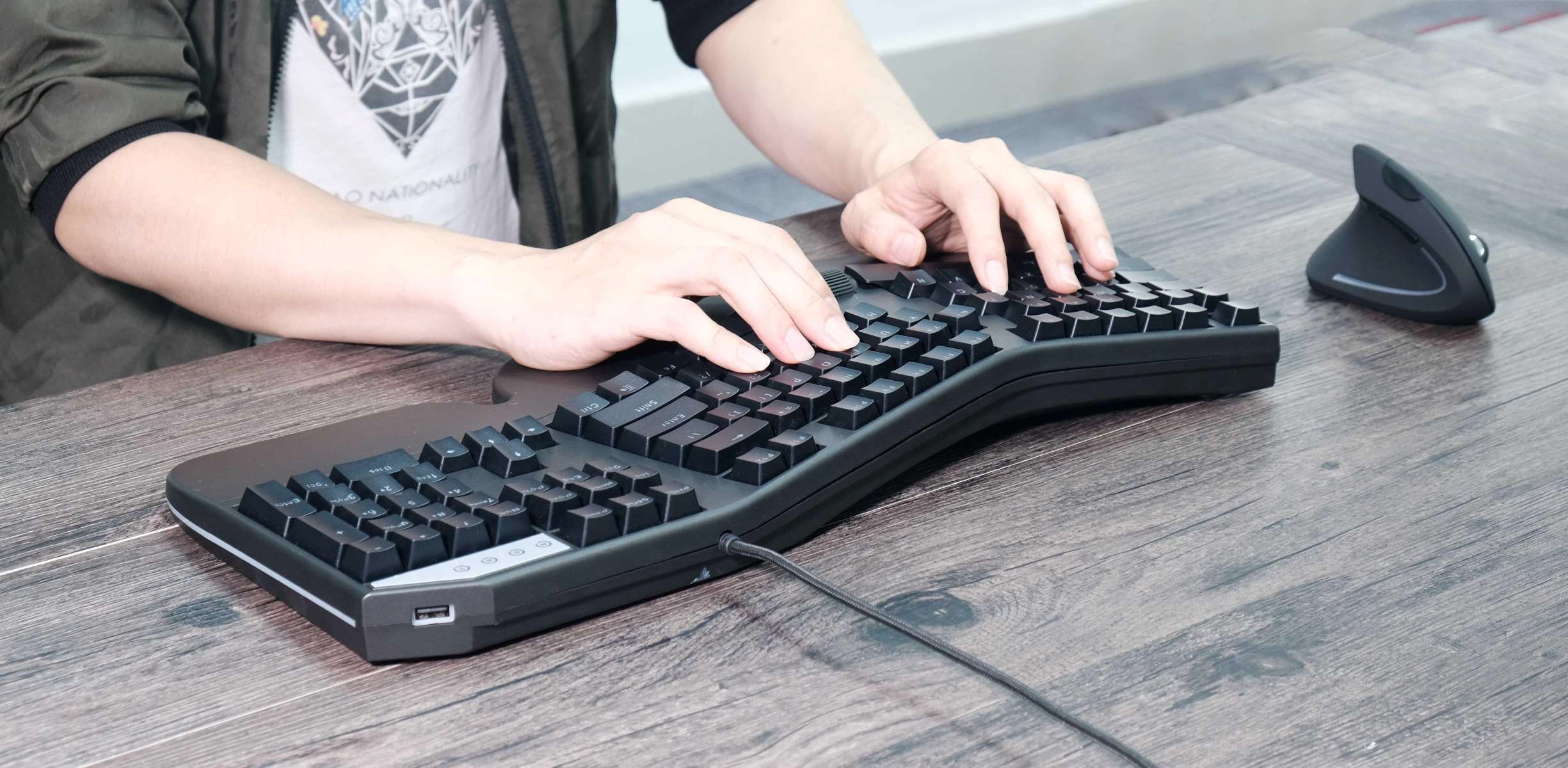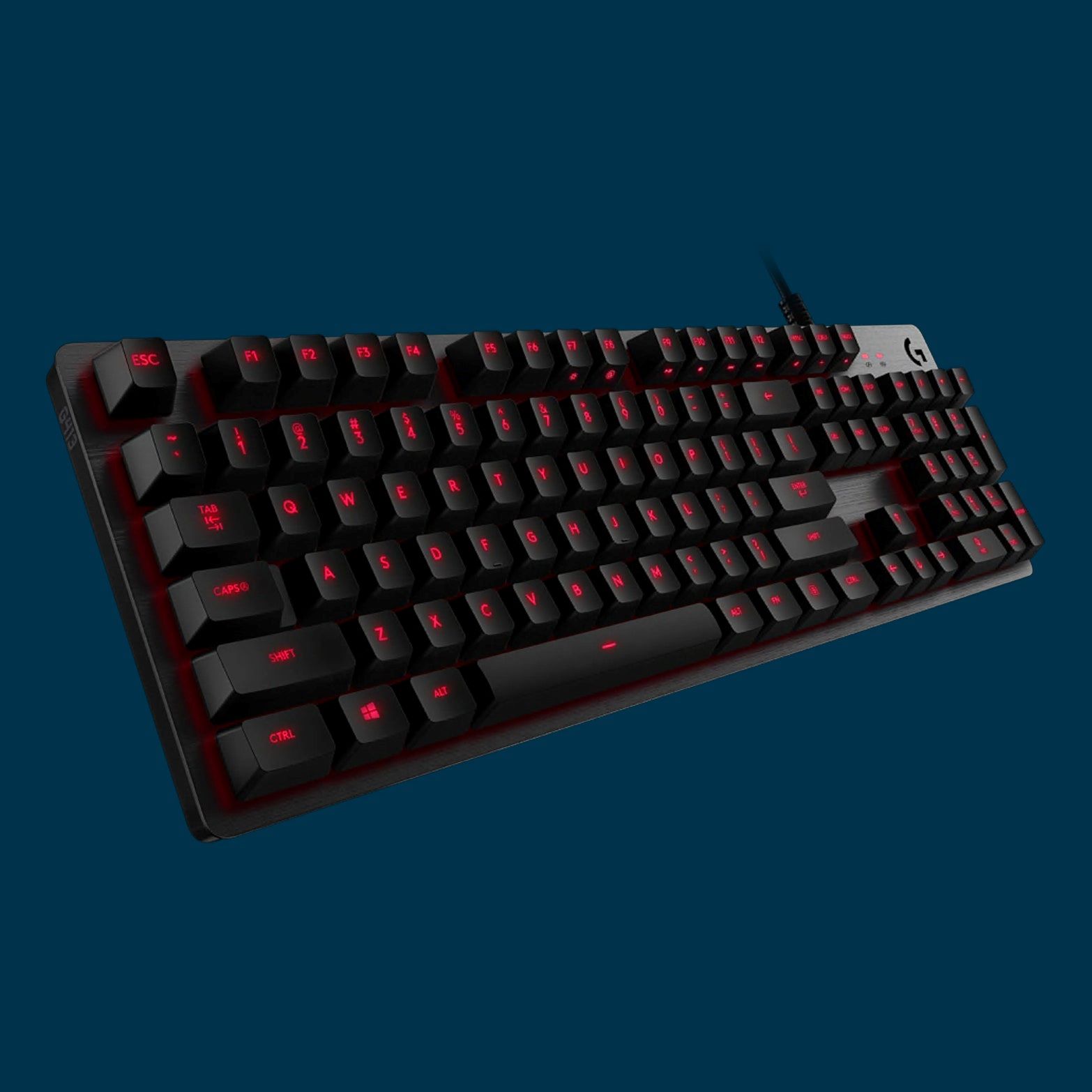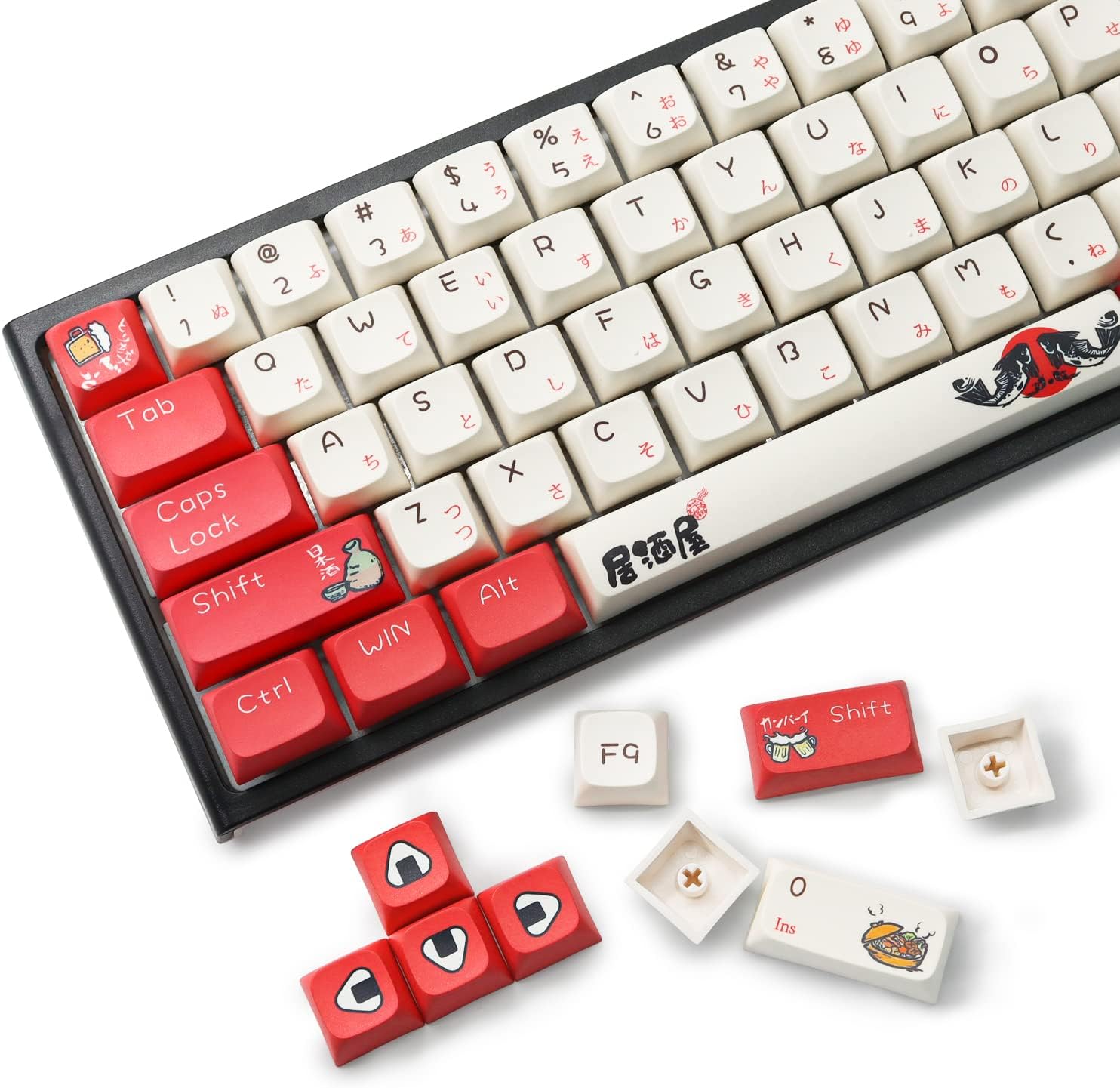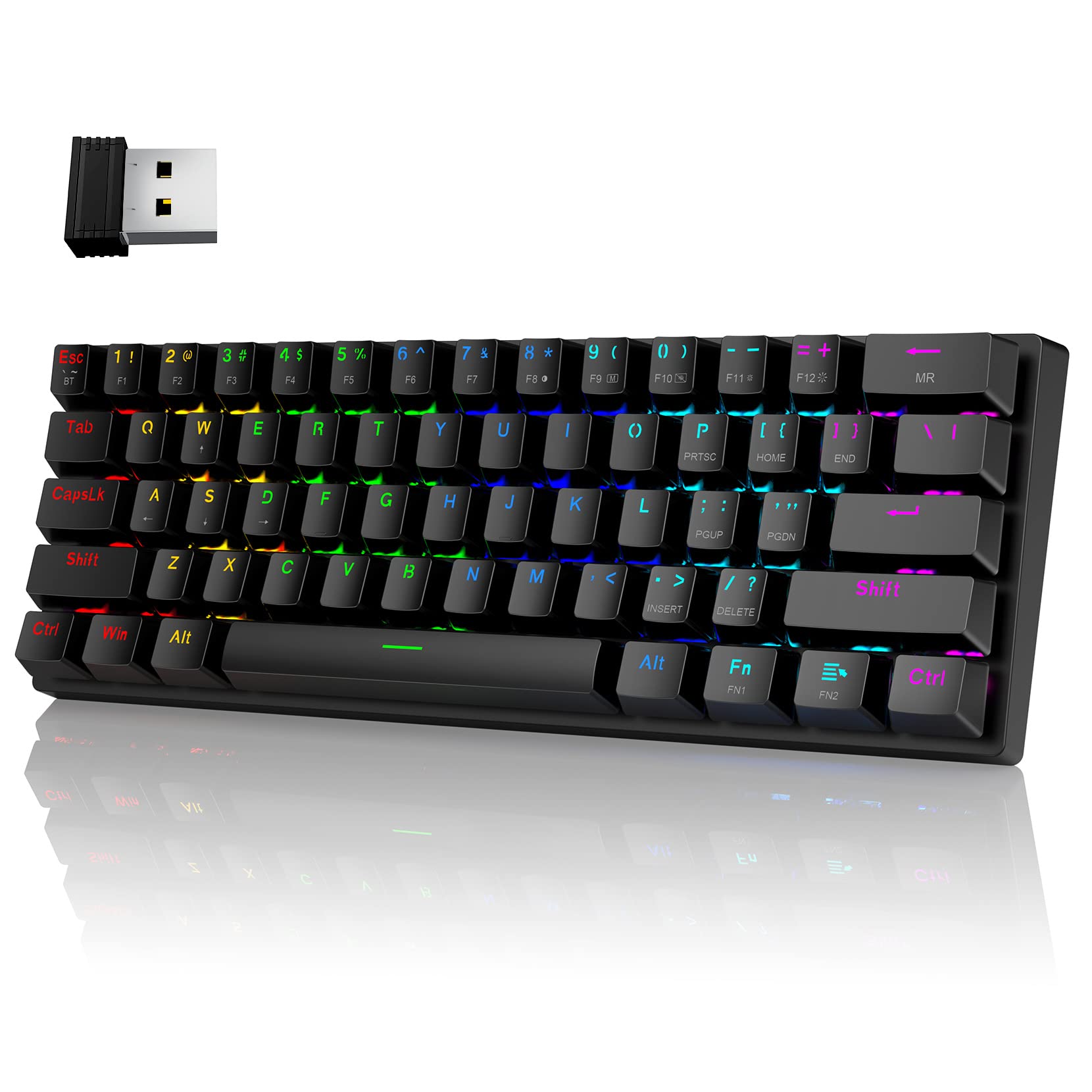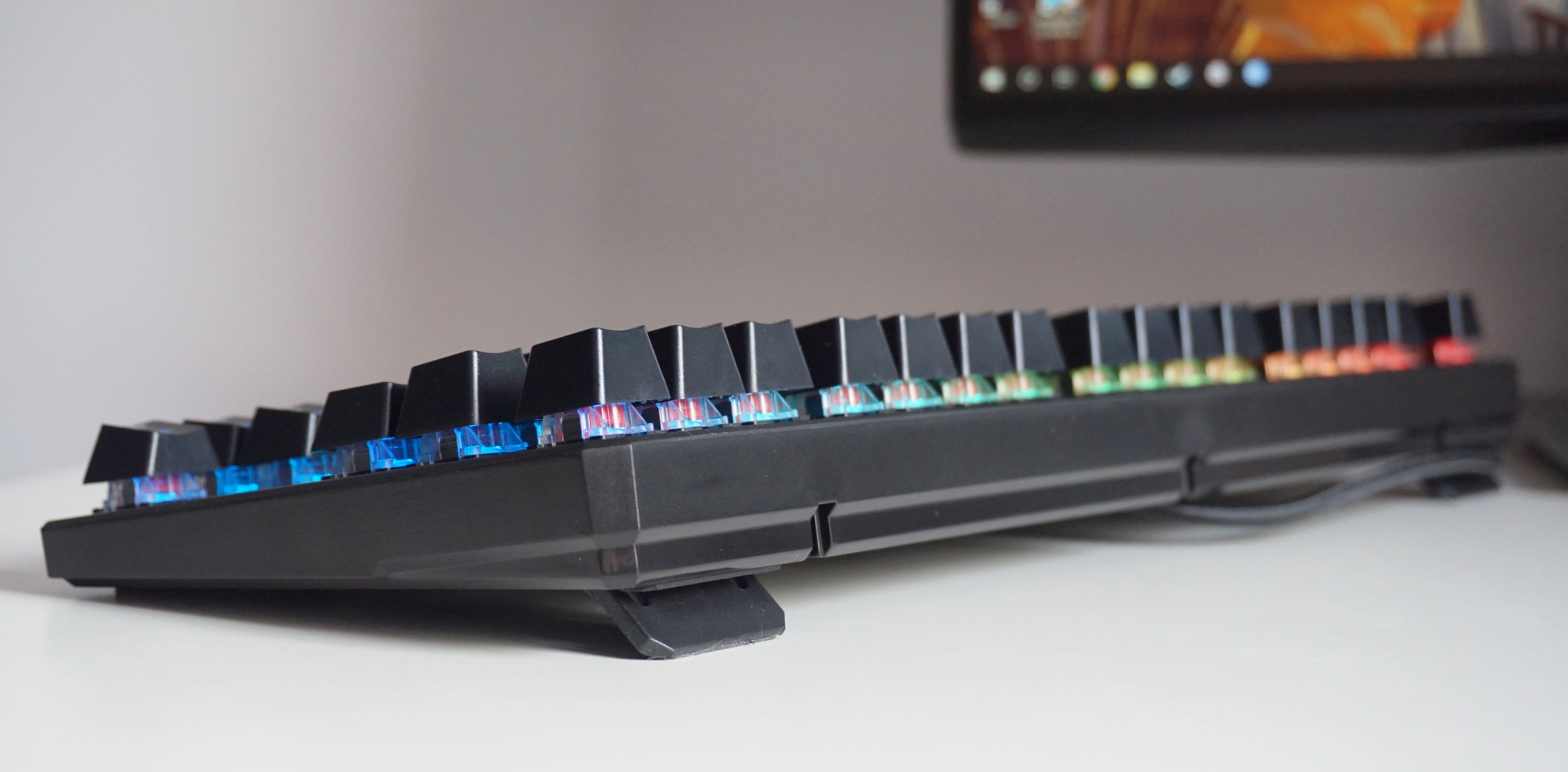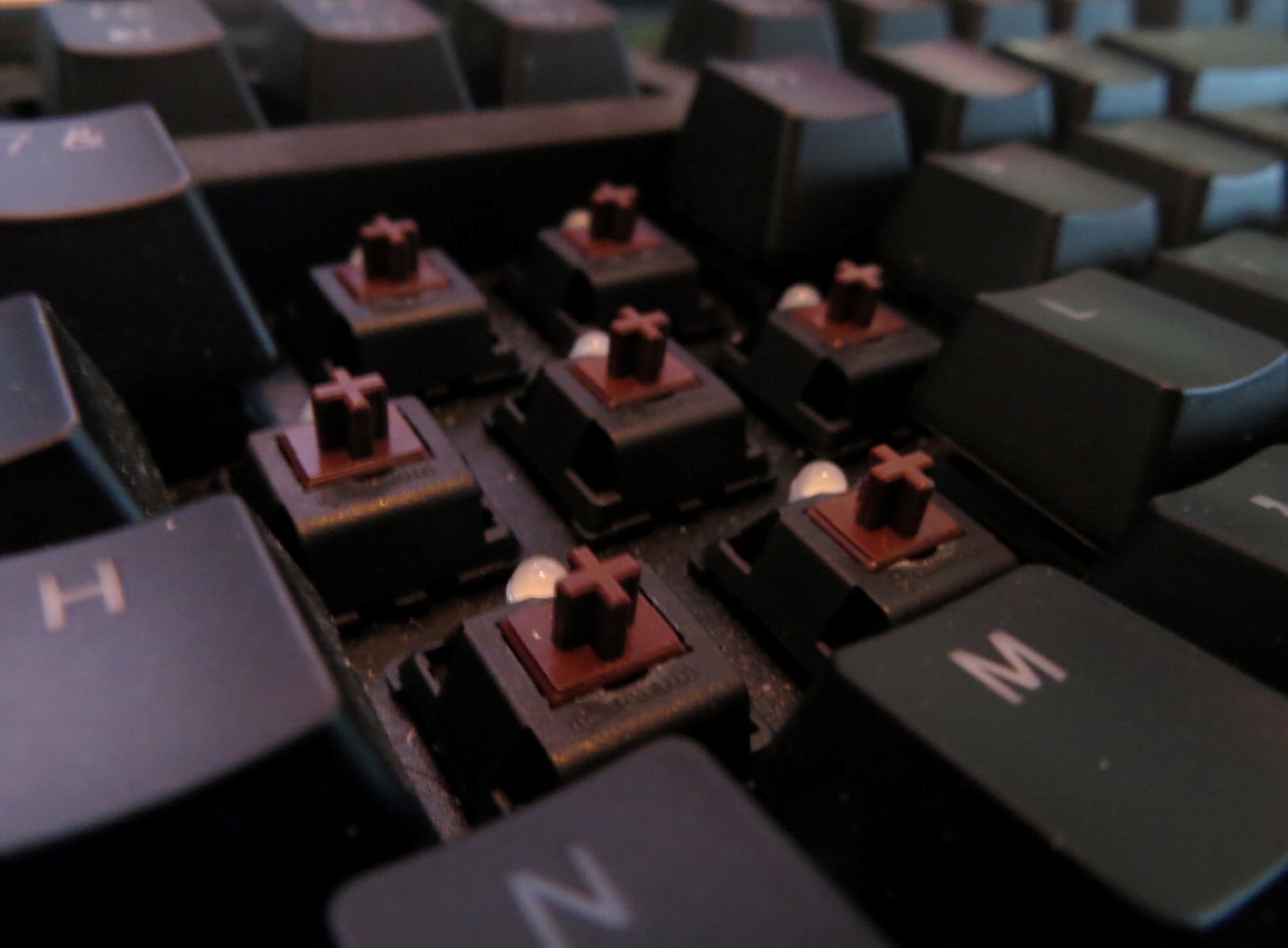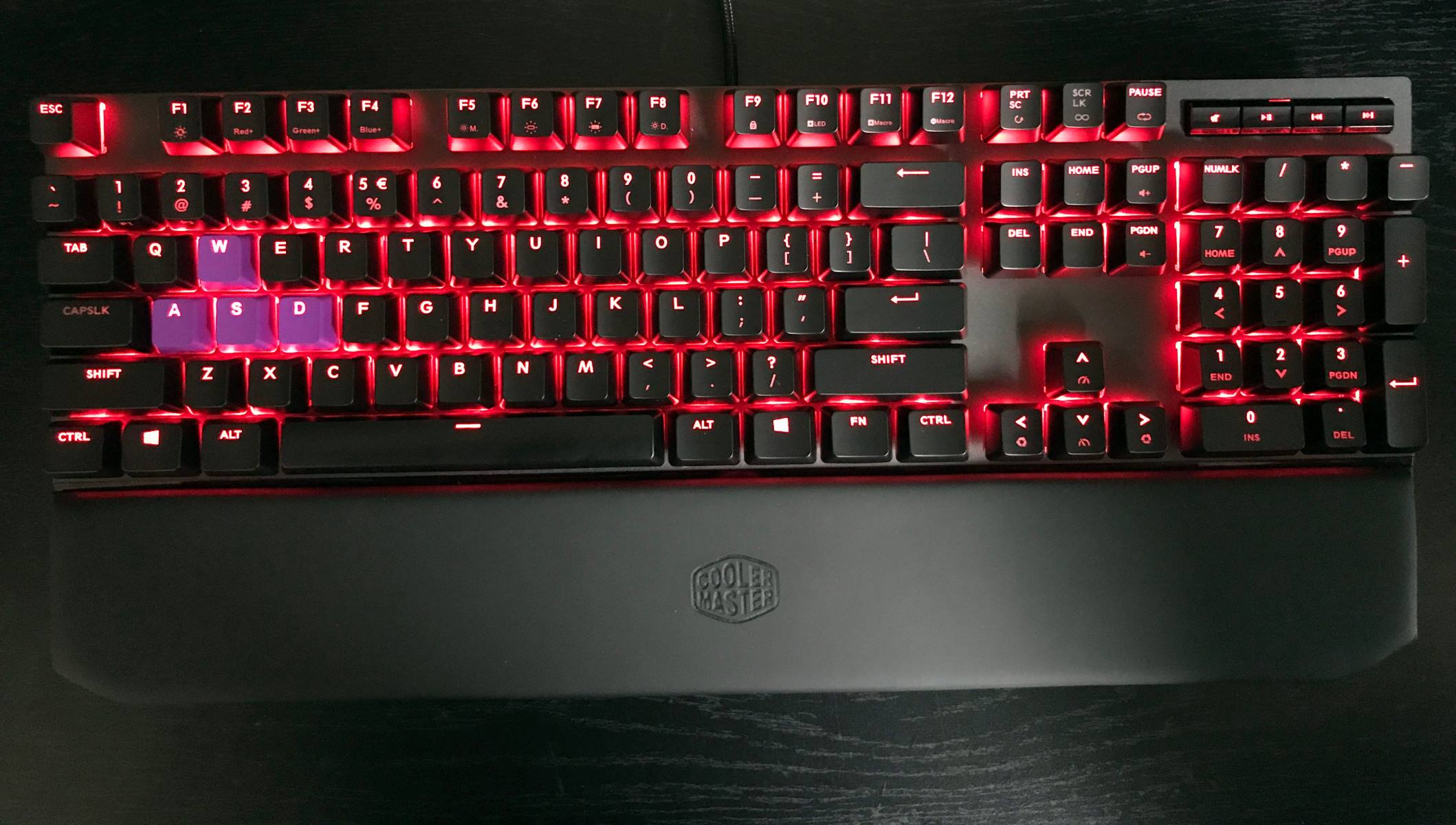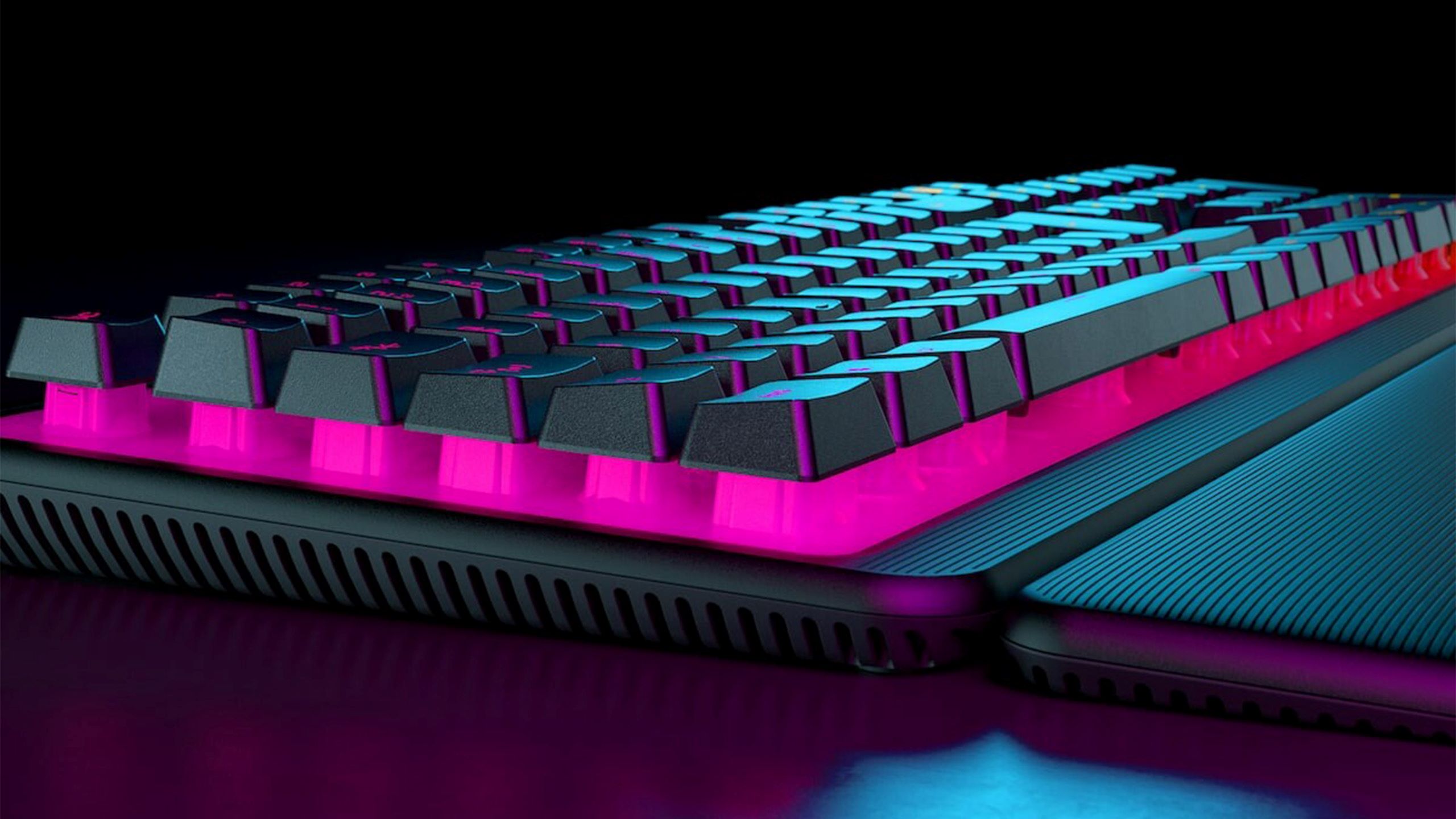Introduction
Welcome to the fascinating world of mechanical keyboards! These exceptional input devices are renowned for their tactile feedback, durability, and customizable typing experience. Whether you're a seasoned enthusiast or a newcomer to the mechanical keyboard realm, understanding the intricate components that contribute to their exceptional performance is a rewarding journey.
Mechanical keyboards have garnered a dedicated following due to their distinctive design and satisfying typing experience. Unlike their membrane counterparts, which utilize a rubber dome to register keystrokes, mechanical keyboards feature individual mechanical switches beneath each keycap. These switches are responsible for delivering the distinctive "click" or "clack" sound and tactile feedback that typifies mechanical keyboards.
As we delve into the anatomy of a mechanical keyboard, we'll explore the components that contribute to its superior functionality and ergonomic design. From the keycap and switch to the printed circuit board (PCB) and stabilizers, each element plays a crucial role in delivering a seamless typing experience.
Understanding the inner workings of a mechanical keyboard is akin to unraveling a captivating mystery. What lies beneath the keycaps is a symphony of precision-engineered components, each meticulously designed to optimize keystroke accuracy, tactile feel, and overall durability.
Join us as we embark on a captivating exploration of the inner workings of mechanical keyboards, uncovering the secrets that make these input devices a beloved choice for typists, gamers, and professionals alike. Whether you're seeking to enhance your typing efficiency or elevate your gaming performance, the journey into the heart of a mechanical keyboard promises to be an enlightening and enriching experience.
Anatomy of a Mechanical Keyboard
Before delving into the intricate mechanisms hidden beneath the keycaps, it’s essential to grasp the fundamental components that constitute the anatomy of a mechanical keyboard. At first glance, a mechanical keyboard may appear deceptively simple, with its array of keys and sleek design. However, a closer inspection reveals a sophisticated arrangement of elements meticulously engineered to deliver a superior typing experience.
The keycap, the most visible part of a keyboard, serves as the interface between the user’s fingers and the mechanical switch beneath it. Crafted from a variety of materials such as ABS plastic, PBT plastic, or even double-shot PBT for enhanced durability and aesthetic customization, keycaps play a pivotal role in dictating the tactile feel and sound profile of each keystroke.
Beneath the keycaps lie the mechanical switches, the heart and soul of a mechanical keyboard. These switches come in a myriad of variations, each offering distinct actuation forces, tactile feedback, and audible characteristics. From the ubiquitous Cherry MX switches to the innovative offerings from companies like Razer, Gateron, and Kailh, the world of mechanical switches is a diverse landscape catering to the unique preferences of every typist and gamer.
Supporting the keycap and switch assembly is the printed circuit board (PCB), a crucial component responsible for relaying keystroke signals to the computer. The PCB serves as the central nervous system of the keyboard, orchestrating the seamless translation of physical keystrokes into digital commands with remarkable precision and speed.
Additionally, stabilizers play a vital role in ensuring consistent keycap movement and minimizing lateral wobble during typing or gaming sessions. These often-overlooked components contribute to the overall stability and uniformity of keypresses, enhancing the tactile experience and keystroke accuracy.
As we unravel the anatomy of a mechanical keyboard, it becomes evident that every element, from the keycap to the stabilizers, has been meticulously designed to harmonize functionality, durability, and user comfort. The synergy of these components culminates in a typing experience that transcends the ordinary, offering enthusiasts and professionals alike a profound connection with their input devices.
What Lies Under a Keycap
Beneath the surface of a keycap lies a world of precision-engineered components that collectively define the typing experience on a mechanical keyboard. The keycap, though seemingly unassuming, conceals a complex and meticulously crafted mechanism that contributes to the tactile feedback, durability, and overall performance of the keyboard.
At the core of the keycap assembly is the mechanical switch, a miniature marvel of engineering that registers keystrokes with remarkable accuracy and responsiveness. These switches come in various types, each offering distinct actuation characteristics, tactile feedback, and audible cues. The Cherry MX series, renowned for its reliability and versatility, features switches with varying actuation forces and tactile feedback, catering to a spectrum of user preferences.
When a key is depressed, the stem of the switch is pushed downward, actuating the switch mechanism and completing the circuit. This action triggers the transmission of an electrical signal to the computer, registering the keystroke with exceptional speed and precision. The audible click or tactile bump accompanying the keystroke is a result of the switch’s design, providing users with a satisfying and responsive typing experience.
Furthermore, the keycap itself plays a pivotal role in shaping the overall typing feel and sound profile. Keycaps crafted from ABS (Acrylonitrile Butadiene Styrene) plastic offer a smooth and slightly glossy texture, while those made from PBT (Polybutylene Terephthalate) exhibit a more textured and durable surface. Some enthusiasts opt for double-shot keycaps, which feature dual-layer construction for enhanced durability and aesthetic customization.
Underneath the switch and keycap assembly, the printed circuit board (PCB) acts as the conduit for transmitting keystroke signals to the computer. The PCB’s intricate network of pathways ensures the seamless translation of physical keystrokes into digital commands, contributing to the keyboard’s remarkable responsiveness and reliability.
Stabilizers, often overlooked but crucial in maintaining consistent keycap movement, play a significant role in minimizing lateral wobble and ensuring uniform keypress stability. These components, typically located beneath larger keys such as the spacebar and shift keys, contribute to the overall smoothness and consistency of the typing experience.
Unveiling the inner workings under a keycap reveals a symphony of meticulously engineered components that harmonize to deliver a typing experience that is both tactile and immersive. The marriage of precision switches, durable keycaps, responsive PCBs, and stabilizers culminates in a holistic typing experience that transcends the ordinary, captivating enthusiasts and professionals with its unparalleled performance.
Types of Mechanical Switches
The world of mechanical keyboards is replete with a diverse array of switches, each distinguished by unique actuation characteristics, tactile feedback, and auditory profiles. These switches, often the subject of fervent debate and personal preference among enthusiasts, play a pivotal role in shaping the typing experience on a mechanical keyboard. Let’s explore some of the prominent types of mechanical switches that have captivated the keyboard community.
Cherry MX switches, the venerable stalwarts of mechanical keyboard switches, have cemented their status as a benchmark for reliability and versatility. The Cherry MX Red switch, characterized by its linear actuation and minimal resistance, offers a smooth and seamless keystroke experience, making it a preferred choice for gaming enthusiasts seeking rapid keypresses. On the other hand, the Cherry MX Blue switch, renowned for its audible click and tactile bump, caters to typists who relish the feedback and audible cues accompanying each keystroke.
For those seeking a balance between gaming and typing, the Cherry MX Brown switch strikes a harmonious chord with its tactile bump and moderate actuation force, providing a satisfying typing experience without compromising gaming performance. Meanwhile, the Cherry MX Black switch, featuring a higher actuation force and linear travel, appeals to users desiring a more deliberate and controlled keystroke feel.
Beyond the realm of Cherry MX switches, other manufacturers have made significant strides in offering compelling alternatives. Razer, a prominent name in the gaming peripherals industry, has introduced its Razer Green switch, characterized by tactile and clicky feedback akin to the Cherry MX Blue switch, appealing to gamers and typists alike.
Gateron, another notable player in the mechanical switch arena, has garnered acclaim for its Gateron Yellow switch, featuring a linear and lightweight actuation that caters to swift and effortless keystrokes, ideal for gaming scenarios where rapid inputs are paramount. Similarly, the Gateron Brown switch, with its tactile bump and moderate actuation force, presents a compelling option for typists seeking a balance between feedback and typing comfort.
Kailh, renowned for its innovative switch designs, has introduced the Kailh Box series, featuring a distinctive architecture that enhances water and dust resistance while delivering a responsive and tactile typing experience. The Kailh Box White switch, with its click bar mechanism, offers a crisp and audible typing experience, while the Kailh Box Brown switch provides a tactile yet silent alternative for discerning typists.
As the landscape of mechanical switches continues to evolve, enthusiasts and professionals are presented with an ever-expanding palette of options, each catering to nuanced preferences and usage scenarios. Whether prioritizing gaming performance, typing comfort, or a harmonious balance of both, the diverse spectrum of mechanical switches ensures that every keystroke is a personalized and gratifying experience.
Conclusion
Embarking on a journey into the inner workings of a mechanical keyboard unveils a captivating tapestry of precision engineering and user-centric design. From the intricate mechanisms concealed beneath the keycaps to the diverse landscape of mechanical switches, every facet of a mechanical keyboard is a testament to the pursuit of an unparalleled typing experience.
The anatomy of a mechanical keyboard, comprising the keycap, switch, printed circuit board (PCB), and stabilizers, harmonizes functionality, durability, and user comfort to deliver a typing experience that transcends the ordinary. Each component plays a pivotal role in shaping the tactile feedback, sound profile, and overall responsiveness of the keyboard, captivating enthusiasts and professionals with its immersive performance.
Delving deeper into the realm of mechanical switches reveals a rich tapestry of options, each catering to nuanced preferences and usage scenarios. From the venerable Cherry MX switches to the innovative offerings from Razer, Gateron, and Kailh, the world of mechanical switches presents a diverse spectrum of actuation forces, tactile feedback, and auditory profiles, ensuring that every keystroke is a personalized and gratifying experience.
As the keyboard community continues to evolve, the allure of mechanical keyboards persists, captivating enthusiasts with their customizable typing experiences, enduring durability, and unmistakable aesthetic appeal. Whether seeking to elevate gaming performance, enhance typing efficiency, or simply revel in the satisfaction of a well-crafted keystroke, the mechanical keyboard remains an enduring symbol of precision and personalization in the realm of input devices.
In essence, the journey into the heart of a mechanical keyboard is a testament to the artistry and engineering prowess that underpin these exceptional input devices. It is a celebration of the union between form and function, where every keystroke resonates with the passion and craftsmanship infused into the design. As enthusiasts and professionals alike continue to embrace the allure of mechanical keyboards, the quest for the ultimate typing experience remains an ever-evolving and enriching pursuit.







